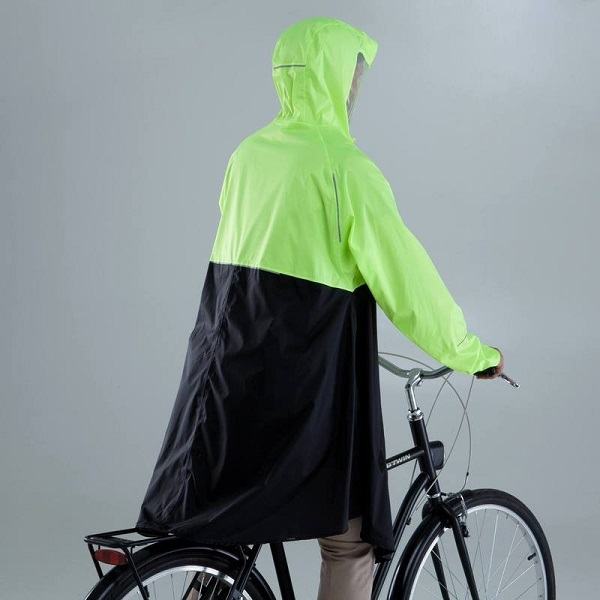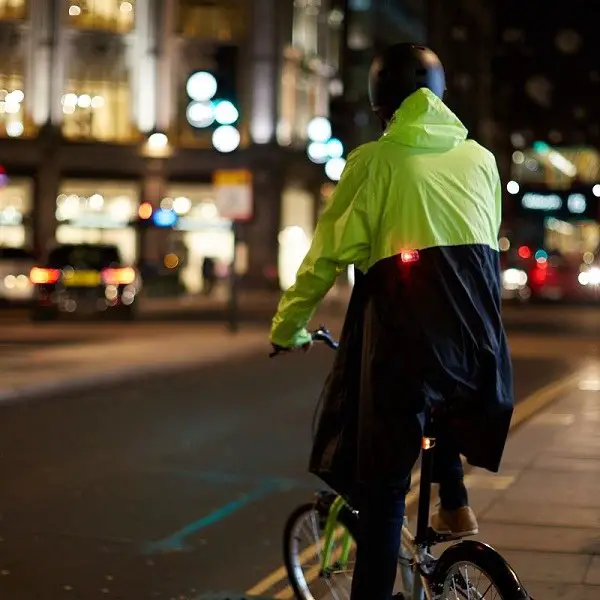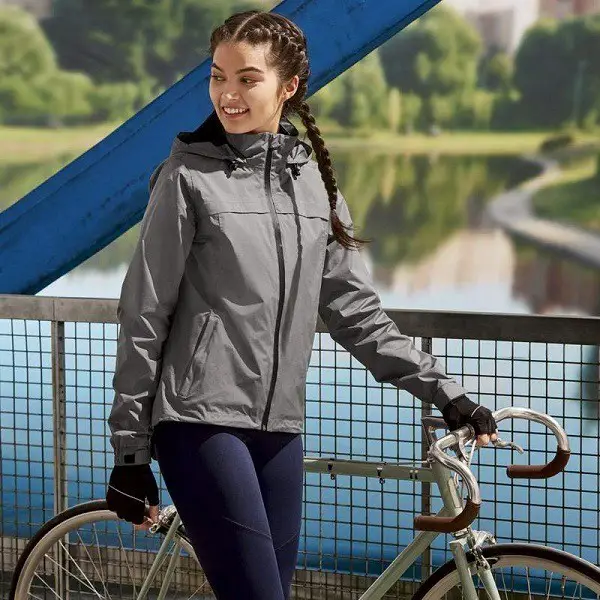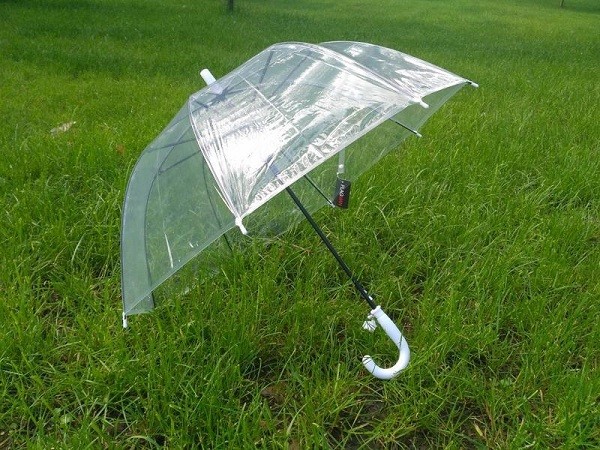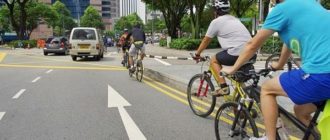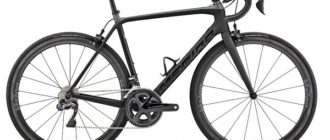“Nature has no bad weather.” – an old, good and simple truth becomes somewhat ironic when it’s pouring rain outside and you need to go somewhere. But not in a warm car, but on a bicycle, bypassing puddles. A raincoat for a cyclist in such a situation is the best option, which will help to brighten up the consequences of bad weather. It is clear that to have it with you all the time will not work, but if the whole day drizzling rain and in the near future the situation is unlikely to change, it makes sense to think about the availability of clothing designed specifically for rough weather.
Rain gear
Who would have thought that cyclist protection from rain these days is not just a piece of film in the form of a jacket? Manufacturers offer cycling fans a host of practical and versatile options that allow them to stay “on the horse” in any weather.
On not quite typical options we will talk a little later, but for now let’s understand what can be clothes for the cyclist, protecting him in rainy weather. The first and most important rule – the outfit should stay dry not only inside, but also outside. Also remember that it is designed for outdoor activities, so too insulated should not be.
Among the variety of protective clothing for cyclists are the following:
- Waterproof clothing – a special outfit, which can be selected taking into account individual preferences.
- Umbrella for bicycles – installed on the handlebars, saves in a light drizzle when there is no wind.
- Rain screen – quite a practical solution for small precipitation.
- Dome umbrella – depending on the model, can cover only the cyclist (over the shoulders) or capture the saddle with the handlebars.
- Bicycle roof or veltop, velocab – usually additionally equipped with side curtains, which prevent rain from oncoming cars.
Going for a ride, it is important to remember that the bike also needs protection. Driving in the rain, and pay attention to your iron friend: clean and dry the chain (a few drops of grease can extend its life), do the same manipulation with the other mechanisms, try not to ride in puddles (it’s not safe and adversely affect the condition of the wheels).
Varieties of bicycle protection from the rain
The most common protection for the cyclist from the rain is a bicycle raincoat. This is an inexpensive and lightweight accessory that will not take up much space in the trunk or bag. In addition, the rain cover for the cyclist (male and female) is inexpensive, so this means of protection from adverse weather conditions can get everyone.
Raincoats are suitable for any cycling non-sporting nature. Bright color and reflective strips on the front and back increase the safety of the cyclist in poor visibility. After the ride, the product should be wiped down and dried to prevent mildew. Consider other options to protect the cyclist from adverse weather conditions.
Poncho .
Quite a handy option for riding in the rain. A poncho perfectly protects your head and upper torso, as well as your hands resting on the handlebars, from moisture. The long (front and back) floors protect the cyclist from jets of water and dirt flying from under the wheels.
Separate protection in the form of waterproof shoes or plastic bags should be used for the feet. Most models of raincoats protect only the top of the cyclist from the weather. The advantages of this option:
- Almost completely covers the cyclist;
- easy to put on and take off;
- does not interfere with heat exchange;
- prevents spray from passing cars;
- cut in such a way that the lower parts cannot get into the bicycle’s chain or wheel;
- does not create a sail effect, so it does not interfere with the movement of the cyclist;
- a wide choice of bright and original colors;
- low cost.
The only drawback is the open legs and unprotected feet.
Cycling booties
To keep your feet dry and warm during the rain, it is worth buying so-called bicycle booties. They come in different versions: longer and shorter. An important point to consider when choosing – the length of the sole of the booties should be 2 cm longer than the length of the sole of your shoes. Advantages:
- feet remain dry even in heavy rain;
- All models usually have reflective elements, which increase the safety of the cyclist in poor visibility conditions;
- decent range, allowing you to choose the most suitable design model;
- reasonable cost;
- versatility – you can use bicycle shoe covers not only for cycling, but also for walking in bad weather.
The only disadvantage that can be noted is the short-lived budget models.
Windbreakers and pants
Those who prefer to ride a bike briskly, you should pay attention to cycling jackets and windbreakers with a hood, made of waterproof material. When choosing the most suitable model, you should pay attention to the fact that the clothes well covered the waist and did not constrain the movement. The product should always be made of a “breathing” material – otherwise the cyclist will get wet, if not from the rain, then from his sweat. Advantages of jackets and pants:
- allow you to continue riding in more comfortable conditions;
- they protect from rain and wind, but regulate heat exchange thanks to the membrane fabric inserts;
- the presence of reflective elements that enhance the safety of the cyclist in conditions of poor visibility;
- quality products will last more than one season, can also go to children, if you choose a classic design;
- the variety of options, which allows you to choose a truly original and attractive model.
The only nuance, which is difficult to call a disadvantage, is the price of quality products. Brand models, made with absolutely all the nuances in mind, have a decent cost. But their quality deserves the highest praise.
Knee, hip, arm and eye protection
When you’re pedaling in pouring rain, it’s important to protect not only your feet and upper torso from the weather, but also your hips and knees. Soaked and hypothermic joints – not a good thing, which can later affect the health. Therefore, it is necessary to protect your feet.
On sale you can find quite practical solutions, for example: capes for the knees and thighs. They are attached to the back of the waist at the hips and below the knees. To protect your hands, you should use gloves that prevent your hands from slipping off the handlebars and also protect them from getting cold in the rain. The same goes for protective goggles that prevent the drips from getting on your face.
Cycling umbrella
This accessory does not provide full protection from the rain. But at the same time reliably protects against sudden light rain. Suitable more for riding in a small community where there are not many cars. Otherwise, this accessory is unlikely to protect the cyclist from splashes flying out from under oncoming cars. Advantages:
- Original design and stylish design;
- can be used in small communities.
But the disadvantages are much more:
- sailing – with a strong gust of wind the movement becomes difficult;
- it takes a lot of space when folded;
- fastening is not reliable enough.
And perhaps the most important disadvantage of bicycle umbrellas – it is incomplete protection from rain.
Dome umbrella
The original and very unusual way of protection from adverse weather conditions. Dome umbrella is a hemispherical structure made of transparent polyvinyl or polyester. Attached to this accessory on the shoulders and hands of the rider and reliably protects the upper part of the torso of the rider from getting wet. On sale you can find a variety of models that can cover most of the body. Advantages of dome umbrellas:
- compact size when folded;
- light weight of the construction;
- almost ideal for leisurely bike rides in the rain.
As for the disadvantages, such designs do not protect the lower part of the torso from precipitation.
Veltops
It is impossible not to pay attention to this outfit. It looks at least unusual and extravagant. Veltop (or cockpit bicycle) is a transparent structure in the form of a roof, which is attached to the saddle or bike rack with its back part, to the handlebar – the front. The sides of the veltop can be raised and fixed to the roof. The sides can be lowered and raised to the desired level for rain protection in strong gusts of wind. Benefits:
- Comfortable driving conditions during a downpour;
- Long life as long as the velotop is carefully dried and packed after every wetting;
- Decent choice of different models (there are even velocabins with a child’s seat).
Despite the original exterior design, veltops have quite a few disadvantages, among which it is worth noting:
- bulky design;
- heavy weight;
- poor visibility in heavy rain;
- high cost;
- Such protection is intended for short trips to nature.
In addition, to take out, unpack and install the veltop, and then hide it compactly again – a time-consuming process.
Conclusion
To summarize, we can say: it’s raining – stay at home. But if you are a fan of cycling and your character does not allow you to sit idly by, choose a reliable means of protection from the weather and go on the road. Luckily, there are plenty of options on sale today to help you through any weather.

